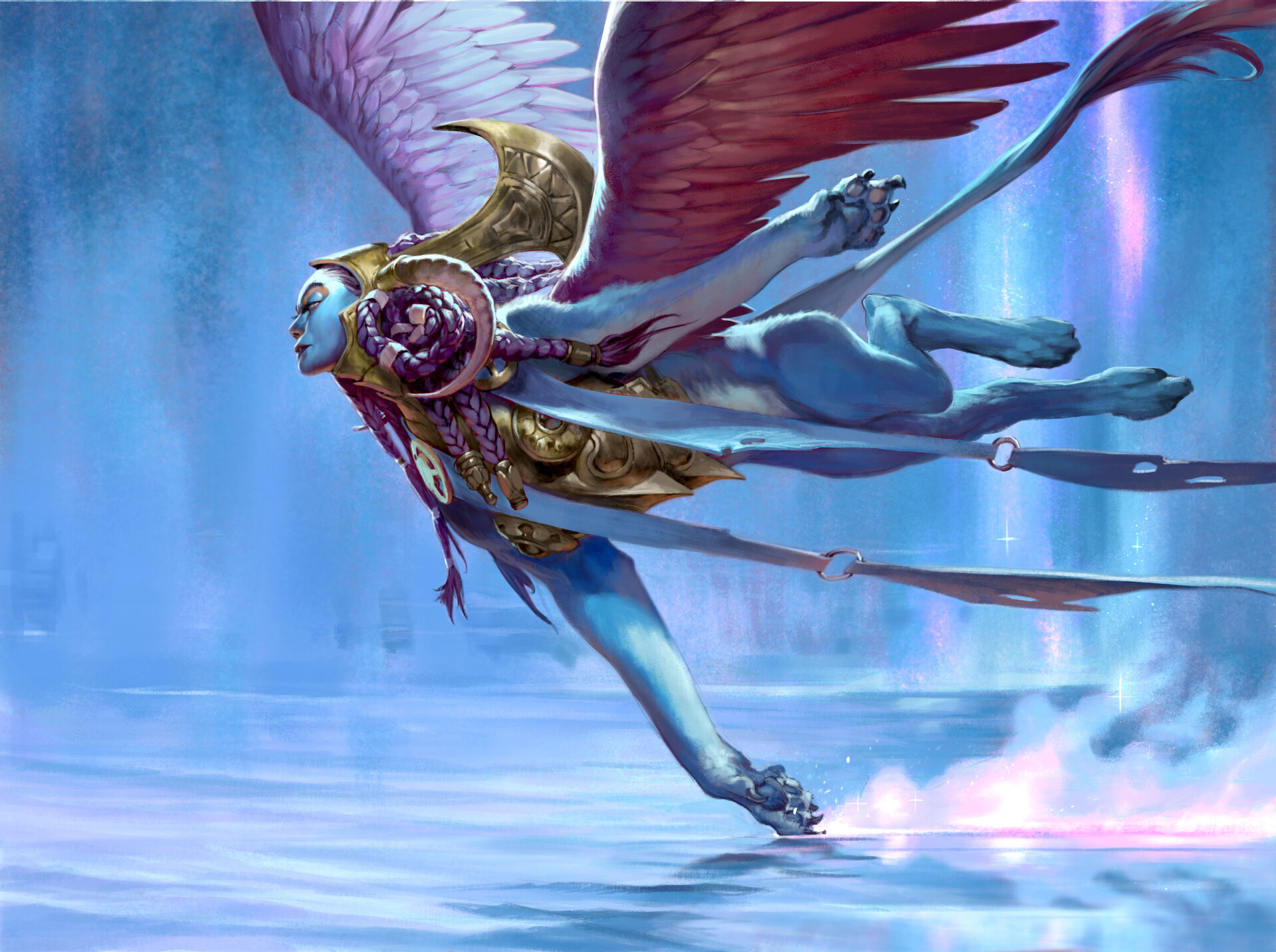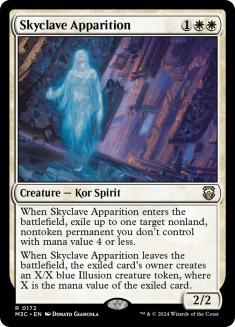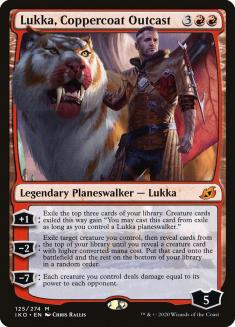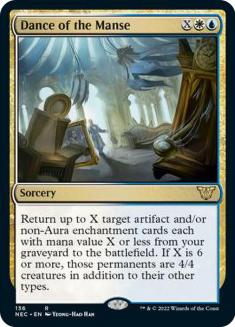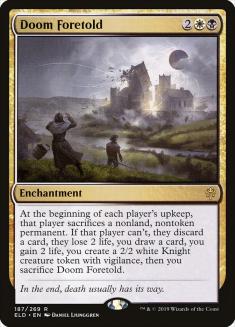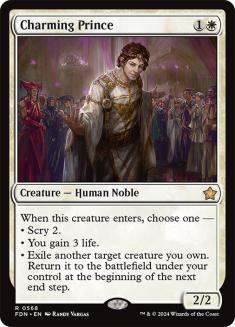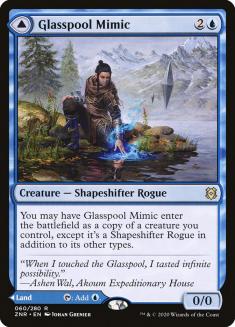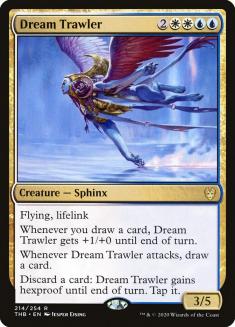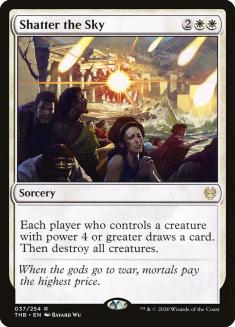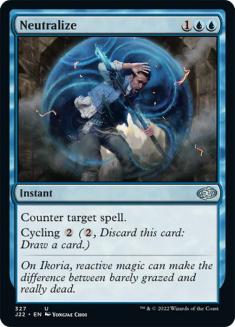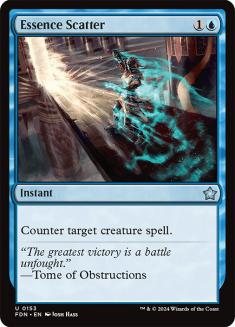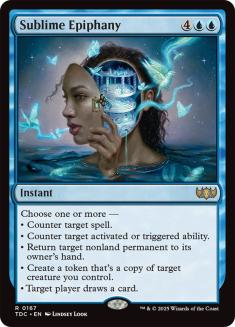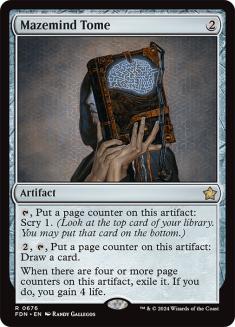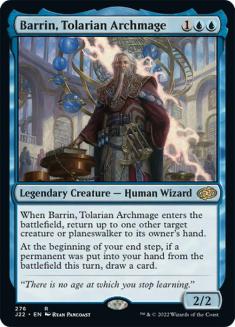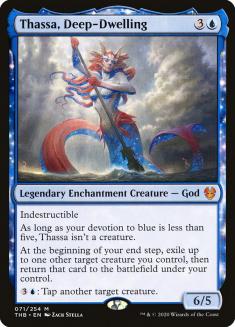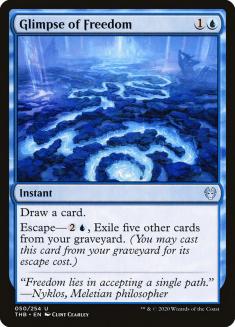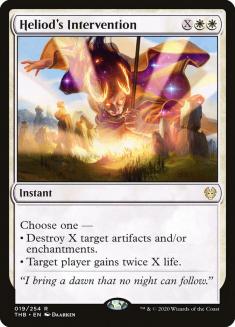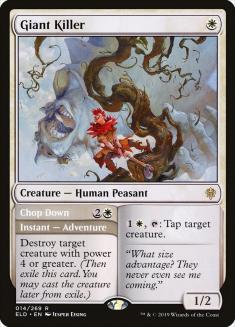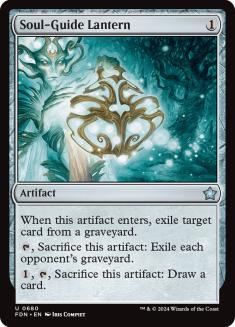Right now, Zendikar Rising Standard is pretty wide open, to a point where I’d hesitate to call any deck the “deck to beat” (the most popular deck in a given tournament might end up being 15% of the field). That said, it seems like Yorion, Sky Nomad strategies have been picking up steam, to a point where I believe they are now the most popular decks in the field. This is not without reason; the shell was already quite strong and the deck gained a powerful new tool in Skyclave Apparition.
Luckily for format diversity, even if Yorion does become much more popular than it currently is, there are a lot of potential builds to play, so the first big question you have to answer regarding your Blink deck is which colors you want to go towards. Right now, there are two major options — Selesnya-based or Azorius-based. These decks then have sub-categorizations (for example, Selesnya can splash blue or not, and Azorius can actually be Esper or Jeskai), but as a whole the main difference is between green-based and blue-based.
The way I see it, there are merits to both options. I believe the blue cards give you an edge in the Yorion mirrors, whereas the green cards give you a slight edge versus aggressive decks and a big edge versus Dimir Rogues. Whether you choose to go for Selesnya-based or Azorius-based will depend on what you expect to face; right now, it seems to me like Yorion decks are the most popular macro-archetypes, so it makes sense to me to gravitate towards blue, but if people adapt and start playing, for example, a lot of Dimir Rogues to beat the Yorion decks, Selesnya might become better.
As far as which Azorius deck I like, there are also pros and cons to each version. The Jeskai list with Transmogrify and Lukka, Coppercoat Outcast is the best versus decks that struggle to beat Dream Trawler and cannot interact at instant speed (such as the Selesnya Blink decks), but overall I think you give up too much to play it. Skyclave Apparition is one of the driving forces behind the deck, I like having access to Yorions I can cast for five mana, and I don’t even like the token makers. If you’re interested in a turbo-Dream Trawler list, I’d rather just play Solemn Simulacrum into it rather than cheat it onto the battlefield with the red cards.
Then, there are the Esper lists, using Doom Foretold and Dance of the Manse. I’ve always had mixed feelings about Yorion and Doom Foretold decks — the two cards work with the same type of permanent, but they really do not work with each other, as you want to have your permanents on the battlefield so you can blink them. Elspeth’s Nightmare is actually pretty appealing to play right now, but Doom Foretold itself is not — all the decks are either Yorion decks (which means they will have fodder), Food decks, or decks with many cheap creatures or recurring creatures, so it’s not actually great anywhere. Since I don’t like Doom Foretold, I don’t think the black splash is worth it.
This leaves straight Azorius, which is my preferred version for the “Yorion metagame.” If the metagame changes, though, then this could change as well, though it would have to be a drastic change for me to prefer the Doom Foretold or the Transmogrify builds.
60 or 80 cards?
There are some people who think that Yorion decks should basically always be 80 cards. The main arguments are that the power level in Standard is relatively flat (there are many cards you want to add and have to end up cutting) and that the manabase might actually be helped by an 80-card deck, since you want to play a lot of basics for fetching – Fabled Passage, Solemn Simulacrum, The Birth of Meletis, Cultivate, etc. – but you also have a lot of lands that are superior to basics (such as the mythic DFCs), so by playing 80 cards you improve the overall quality of your lands.
I believe both these arguments have merit, but don’t think they are absolute. Even though there are cards I wouldn’t mind adding (and in fact struggle to cut), the power level is just not the same. It used to be that a resolved Yorion would just win you the game in most spots regardless of what you had, but now this is no longer the case — the decks are much more grindy and it’s not uncommon to resolve Yorion and lose many turns later, so you actually are looking for the right things to blink (blinking Omen of the Sea and blinking Omen of the Sun are not equal).
Personally, I believe that Selesnya builds should probably stick to 60 cards. The reason for this is that the Food cards, notably Wicked Wolf, Gilded Goose, and Trail of Crumbs, are highly synergistic with each other, and there is really no replacement to be found. Drawing one Gilded Goose and one Trail of Crumbs maximizes each of these cards to a point that you just cannot replicate with something like Golden Egg, so you’re actually suffering a lot to add the next twenty cards. Besides, the deck does a lot of digging with Trail, and digging for four Yorions in 60 cards is much different from three Yorions in 80 cards, which kind of makes up for not having access to a guaranteed one.
Azorius builds, however, do not have this synergy component — your cards don’t get much better in combination with any other cards, so the power level is more flat. To me, this means they are probably better off going to 80 cards to have reliable access to Yorion.
So, right now, my preferred version for the metagame I expect is 80-card Azorius.
Back when I posted a list of Azorious Blink (Yorion) in this week’s Zendikar Rising Standard What We’ Play, I was still working with a somewhat stock list. Since then I’ve played more of the deck in preparation for the MPL Weekly, so I’ve developed stronger opinions around certain cards. Full disclosure, I’m not actually playing Azorius Blink (Yorion), but that is mostly due to the metagame that I expect at the MPL Weekly specifically and not necessarily reflective of what I’d do on ladder or even in a tournament.
In the previous metagame, I was never a huge fan of Omen of the Sun, but I acknowledged that there was value in having it. In this metagame, I just don’t see it — after playing a reasonable amount with this deck, I think this card is horrible. You’re no longer pressuring any planeswalkers with it and all the aggro decks seem to go over the top of it quite easily — it’s not uncommon for the 1/1s to do literally nothing the entire game, since there aren’t piles of 1/1s, 2/1s and 2/2s for you to block. The only matchup I think you actually miss it in is Rakdos Midrange, where the 1/1s do a good job of blocking Mire Triton or chump-blocking Kroxa, Titan of Death’s Hunger. I’ve been happy with zero copies in all my Yorion decks.
Charming Prince looks like it’d be a good card now that you have another good blinkable early creature (and now that one Yorion doesn’t necessarily win the game), but in practice I’ve found it to just be too bad. There are few decks you want the life against (again, the aggro decks mostly go over the top of you and attack in big chunks) and even the previously reasonable floor of “Scry 2” is not always a thing anymore because of Dimir Rogues. Most of the time this card is just air, and when it’s not just air they can often kill it. I started with four copies, moved down to two, and then went to zero.
Originally I only had two copies of this card in my deck, but Matt Nass kept saying it was insane so I added a third and a fourth and they turned out to be quite good. The cost is low and it’s effectively a much better Charming Prince — you don’t get to loop Yorions forever but you do get two Yorion triggers (you copy a Yorion, keep the original one, and blink it) and that is usually enough. It’s also quite good at copying Dream Trawler or Shark Typhoon tokens.
I think Dream Trawler is quite good in this metagame, as many decks have no answers and then it just wins the game. It’s especially good if you can accelerate it with Solemn Simulacrum or if you have a way to discard it to bring it back with Elspeth Conquers Death, such as Thirst for Meaning.
Shatter the Sky used to be a four-of in most Yorion builds, but nowadays Yorion decks are actually creature-based so you don’t want to constantly sweep the battlefield — you want to create a battlefield presence that you will then blink. Besides, the aggro decks are better at grinding than they were before, for the most part. I think this is a reasonable two-of but wouldn’t play four.
I think you need to play some number of counterspells to actually have the edge against other Yorion decks. I don’t love Negate maindeck in this metagame (most of the important cards are creatures, even out of the control decks), and I think Dispute is mostly good for forcing through your spells (so more of a sideboard card here), which leaves the other three. Sublime Epiphany is a good card but I like to play a lot of Dream Trawlers and I don’t want that many six-mana cards, so I like a split of Essence Scatter and Negate.
This deck does have an issue with counterspells in that they’re usually telegraphed — since you have the option to returning Yorion to your hand, the fact that you didn’t can be construed as a tell that you have a counterspell. This is unfortunate, but unavoidable; thankfully there are enough instant-speed actions you can take – Omen of the Sea, Thirst for Meaning, activating Castles, Shark Typhoon, activating Mazemind Tome – that at least some portion of the time you can hide it.
I’d happily play eight Omen of the Seas if I could, and this is the next-best card. Also in the absence of Charming Prince and Omen of the Sun it’s good to have access to some lifegain, even if it isn’t that important in this current format (and Dream Trawler does it too).
Barrin, Tolarian Archmage seems like he would slot right in in this deck but in the end I’ve found him to be too low-impact. Right now, there are just too many creatures with enters-the-battlefield effects where bouncing is actually detrimental.
I like Thassa if you have Barrin, but if you don’t have Barrin, then I don’t think you have the critical mass of cards necessary to make Thassa work.
So, this is my list:
Creatures (17)
Lands (27)
Spells (36)

This deck is a control deck, though it plays a lot more to the battlefield than previous Azorius decks. There are some counterspells, but you should usually spend them as early as possible against anyone who’s not playing the mirror, which is the one matchup where you should wait for prime targets. I’ve seen lists with even more counterspells and no Solemn Simulacrums, but I think this is a good balance.
The Sideboard
Most of the sideboard is pretty self-explanatory. The format is still wide open to a point where I don’t think it’s very useful to have specific sideboard guides, since lists change so much and one detail could change how you sideboard, so I’m going to give a general overview of what the cards are for.
This is for any blue decks — mirrors, Dimir Rogues, Ramp. I also believe you should bring this in versus the Selesnya versions of Yorion, as they have Yorion themselves as the most important card and it’s not uncommon for you to be able to counter something else for three mana.
Shatter the Sky is for any aggressive deck — Golgari Adventures, Mono-Red Aggro, Gruul Adventures, Selesnya Adventures. It’ll usually be obvious when this card is good.
Glimpse of Freedom is exclusively against Dimir Rogues — I don’t like it in any other matchup. I think the optimal way for Dimir Rogues to play this matchup is to take it to the super-late-game rather than fight over removal spells (basically they should be very conservative), so having a card like Glimpse of Freedom pulls double duty; it stops them from triggering their early cards such as Into the Story, Drown in the Loch, and the Rogues themselves, and it also gives you more resources in the late-game when you reach the quasi-draw-go stage that they are actually aiming for.
I like having one copy of Heliod’s Intervention in the mirrors, and especially so against the Selesnya version where you can get Trail of Crumbs and Food tokens. If Selesnya becomes the premier version, I can see adding a second copy of this card. Similarly, if Esper becomes the premier version, a second copy of this can be good. I also like to sideboard it in versus Mono-Red decks, as they have Anax, Hardened in the Forge and Embercleave for you to kill, plus the lifegain mode can randomly be quite good.
Giant Killer is for Gruul, versions of Adventures with Questing Beast, Mono-Green Aggro, Mono-Red Aggro, and Rakdos Midrange. It’s a pretty good card and I wouldn’t be opposed to having two or three copies depending on the metagame.
The most cuttable of the sideboard cards in my opinion, Soul-Guide Lantern is mostly there for Rakdos Midrange. You can also bring it in versus Dimir Rogues as it helps against Agadeem’s Awakening and Lurrus of the Dream-Den, but it’s hard for these cards to get value against Azorius anyway as a lot of the removal exiles, so it’s not a necessity there.
This is for the blue matchups as well (Rogues, Yorion), so that you can more comfortably leverage your counterspells and play the draw-go game.
Depending on what matchups you expect, you can also have Negate in your sideboard. I don’t actually love it against the Selesnya Blink decks, but it’s quite good versus Esper and okay versus Jeskai and Azorius.
Zendikar Rising Standard Is Good!
Overall, I’ve really been enjoying this format, and I think you can play basically whatever style of deck that you want. Yorion decks seem to be the most popular, but there are enough different flavors of it that it’s not too repetitive, and there are many possible counters you can play or tweaks you can make to your deck to adapt to them. I will be surprised if Yorion decks become as dominant as, for example, Temur Reclamation and Four-Color Adventures were.
The fact that there are many different decks to choose from also means that metagaming is more of a consideration; you should be constantly changing your deck according to what you expect to face in a given week. Maybe Yorion decks are more popular now, but that just makes Dimir Rogues the most popular deck tomorrow and that’s the deck you have to adapt to, which then makes Rakdos Midrange the most popular deck, and so forth. So this isn’t a format to just sit by with one list without changing anything week after week. It’s a format that requires constant adaptation, and I’m sure in one week my list will be very different, so you should not necessarily copy my choices exactly but rather understand the reasoning behind them so you can make all these choices yourself in the next metagame shift.

